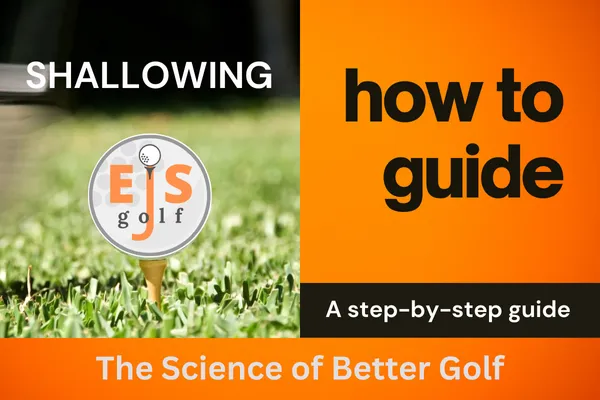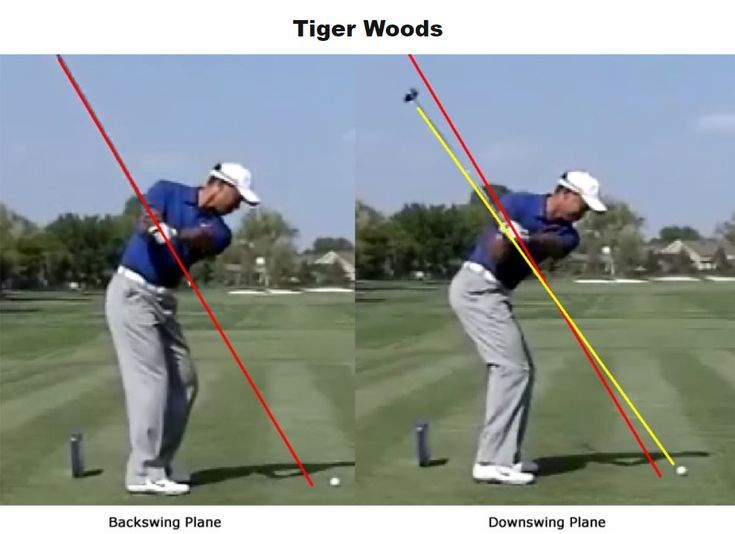
The Science of Shallowing the Golf Club Explained
The Science of Shallowing the Golf Club
Hi friends and golfers! I'm Coach Erik Schjolberg, owner of EJS Golf at McCormick Ranch Golf Club in Scottsdale, AZ. With over 25 years of experience coaching golfers from PGA Tour pros to passionate amateurs, I'm dedicated to helping every player improve from their very first lesson. My state-of-the-art facility and data-driven approach guarantee results, whether you're seeking in-person Scottsdale golf lessons or online golf lessons. Visit my website, EJS Golf, to learn more about the Science of Better Golf and let's elevate your game together!
As a golf instructor, I'm always excited to discuss the latest scientific findings in golf biomechanics, especially when it comes to improving swing mechanics. Dr. Sasho MacKenzie, a renowned golf biomechanist from Canada, has provided some fascinating insights into the concept of shallowing the golf club during the transition phase of the swing.
The Importance of Shallowing
According to Dr. MacKenzie's research, 39 out of 40 touring professionals exhibited some degree of club shallowing during the transition from backswing to downswing[2][4]. This statistic is significant because it highlights a key difference between elite players and amateurs. Many amateur golfers tend to be too steep in this crucial phase of the swing, which can lead to inconsistency in both contact and ball flight.
Biomechanical Explanation
The scientific explanation for why shallowing is beneficial lies in the relationship between the club's center of mass and the hand path. Dr. MacKenzie explains that when the center of mass of the golf club gets under the hand path during the downswing, it becomes much easier to square the clubface at impact[1]. This positioning allows for a more efficient transfer of energy and improved control over the club head.
The "Dropping" Sensation
Many skilled golfers describe the feeling of the club "dropping" or "falling" during the transition. This sensation is directly related to the shallowing motion. From a biomechanical perspective, what's happening is that the club head is moving faster than the grip during this phase, creating a momentary feeling of weightlessness.
Implementing Shallowing in Your Swing
As a coach, I often use a drill to help my students feel this shallowing motion:
1. Take your backswing to the top position.
2. Allow the club to drop, with the club head falling slightly faster than the grip.
3. As you catch the club, begin rotating your body and pulling the club in the direction of the target.
This drill helps create the sensation of the club shallowing without actively manipulating it with your hands or arms. It's important to note that this motion should feel natural and not forced.
Checkpoints
I am a firm believer in feedback tools in order to reach our goals the quickest way possible. Shallowing checkpoints:
1. Arm Parallel. Backswing - line down the club shaft will land somewhere between the golf ball and the golfers feet
2. Arm Parallel Downswing - line down the club shaft will point outside of the golf ball

The Bigger Picture
It's crucial to understand that shallowing the club is just one piece of the puzzle. As with any swing change, it needs to complement other aspects of your motion. For instance, players like Sergio Garcia who have a pronounced shallowing action also tend to have significant lag (wrist cock) late into the downswing[1]. These elements work together to create a powerful and consistent strike.
Remember, every golfer is unique, and what works for one may not work for another. That's why at EJS Golf, I use advanced technology like 3D Force Plates, TrackMan 4, and Sportsbox 3D to provide a comprehensive analysis of each student's swing. This allows us to make targeted improvements based on individual needs and biomechanics.
If you're interested in learning more about how to incorporate these advanced concepts into your game, I invite you to visit EJS Golf or book a lesson with me at McCormick Ranch Golf Club in Scottsdale, AZ. Whether you're looking for in-person Scottsdale golf lessons or online golf lessons, I'm here to help you understand and improve your swing using the latest in golf science and technology.
(480) 861-9370
